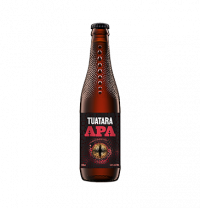Have you ever wondered what the difference is between IPA versus APA? The answer is more complicated, and more fascinating, than you might imagine, as Michael Donaldson explains.
It’s a question I get asked all the time at beer tastings and events: what’s the difference between IPA and APA?
The short answer is that IPAs are hop-and-alcohol-heavy pale ales, originally created to last lengthy shipping times, while APAs have a balance of malts and hops, with a lighter character and citrusy punch to them. The long answer, however, is a bit like pulling apart Queen Elizabeth’s royal family tree and trying to remember how the Stuarts, Hanovers and Windsors are all inter-related.
Family is at the heart of the matter – and in the case of these ales, it’s the story of a family who sent various generations of descendants to far-flung places such as India, America and New Zealand.
In the 18th century, the pale ale family was being born into the kingdom of beer. Pale ale was created off the back of the development of coke, a clean-burning form of coal which allowed maltsters to create a lighter-coloured malt than the charred, dark, smoky version that meant every beer before 1700 was dark and roasty.
So pale ale was only “relatively” pale and today we’d regard original pale ale as dark. Nevertheless, its creation changed the beer world.
Throughout the 18th century this new-fangled beer was being shipped to India and elsewhere in casks.
But unlike darker porters and stouts (which lend themselves to ageing) pale ale didn’t always survive the long journey to the warmer climate in the best state. Without delving too far into the complexities (as that’s another story in itself), a hoppier, more alcohol-heavy beer evolved to handle the journey to India without degrading too badly and thus India pale ale was born. Or as we know it now: IPA.
Both pale ale and IPA remained much the same for around two centuries until the 1980s microbrewery revolution in the United States.
These emerging brewers didn’t set out to change the world – in fact, pioneering San Francisco brewer Anchor actually went back in history by making a classic British Pale Ale but using vibrant citrus-pine American hops. Brewer Fritz Maytag also resurrected the almost forgotten art of dry-hopping – the adding of hops to the beer post-fermentation. His Anchor Liberty Ale set a new American benchmark for what a pale ale could taste like.
Others like Sierra Nevada Pale Ale followed suit and soon everyone in America was making their own interpretation of a pale ale, a style that came to be known, eventually, as American pale ale (APA) and separated from its British family tree by the use of American hops.
A good APA maintains a balance between malt and hops – it’s just that the hops are more assertively pungent and floral than their British cousins.
To further complicate things, in the race between emerging microbreweries to get noticed, these APAs gradually became hoppier and higher in alcohol and thus the American-style IPA was born. Where a British-style IPA is malty, even buttery, with fruity esters and a hop character that delivered herbal and blackcurrant notes, the American-style IPA had a cleaner, leaner malt base and used the brash citrus and pine characters of native hops to create a more hop-forward drinking experience.
Bizarrely, the difference between British and American IPA is much clearer than the difference between APA and American-style IPA.
Mike Nielsen of Panhead, whose Supercharger APA is one of the most popular beers in New Zealand, says the difference between APA and IPA is on a “sliding scale”.
“An APA at around five per cent is very well balanced between malt and hops. In an IPA the malt is a bit more subdued – it’s there to let the hops shine. You shouldn’t finish an IPA saying ‘that was a well-balanced beer’ you should finish saying ‘those hops were delicious’.”
His Supercharger, at 5.7 per cent is hoppy enough and high enough in alcohol to be called an IPA.
“It’s definitely an APA but of the strong variety – to some people it could feel like an IPA because it’s more hop focused than a traditional pale ale but it’s definitely got that balance between malt and hops.”
Nielsen says a good tasting experience would be to put his Supercharger up next to Epic’s Pale Ale. The latter has a big caramel malt base and traditional American Cascade hops notes of citrus and Turkish delight, while Supercharger is slightly leaner on the malt with Simcoe, Citra and Centennial hops, which tend towards stonefruit flavours such as peach and lychee.
Another good tasting comparison could be to get your hands on a range of Tuatara beers. They have an IPA which is done in the British style, and two APAs (American, with a mainly white label, and Aotearoa, with a blue label). Their IPA is maltier and the hop character more restrained than what we’ve come to expect from brash American IPAs, but there’s a subtle fruitiness to it. The American Pale Ale is a bit more like Epic’s Pale Ale with a caramel malt character offsetting the citrussy American hops, while the Aotearoa Pale Ale is built on a pilsner malt base which is there primarily to showcase the wonderful passionfruit and tropical aromas of New Zealand hops.
As more brewers play with styles, the lines between pale ale, APA and IPA continue to blur.
In fact, New Zealand-style pale ales made with our delectable hops are widely recognised overseas by the abbreviation NZPA, while we’re also seeing more “Pacific”-style pale ales and IPAs which tip their caps to America, New Zealand, Australia and Japan. It may be an often confusing category, but one thing that Liberty Brewing’s limited release TPPA (Trans-Pacific Pale Ale) demonstrates, it’s certainly a fun one.







